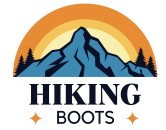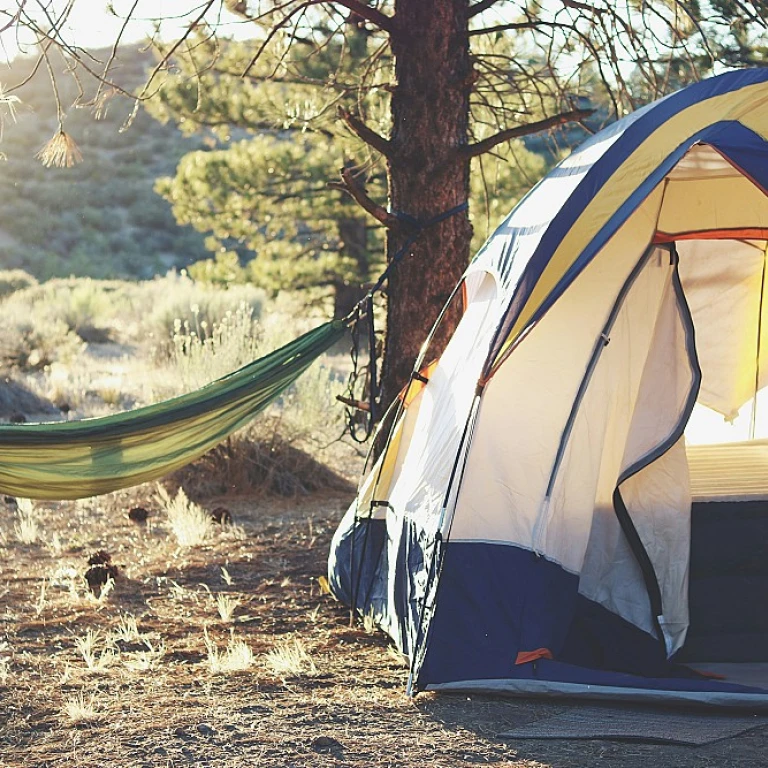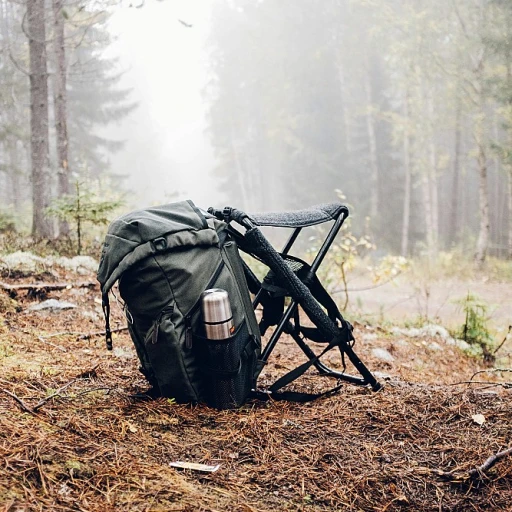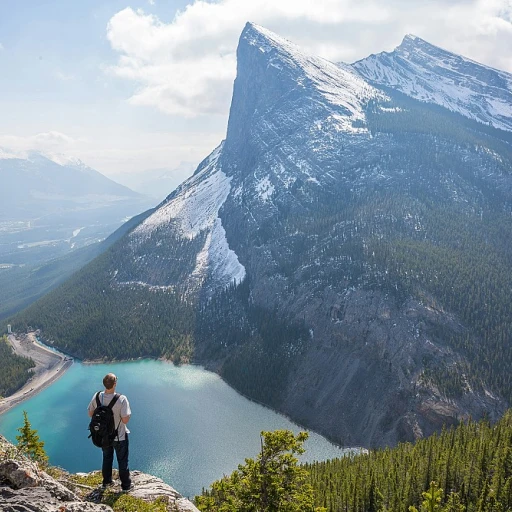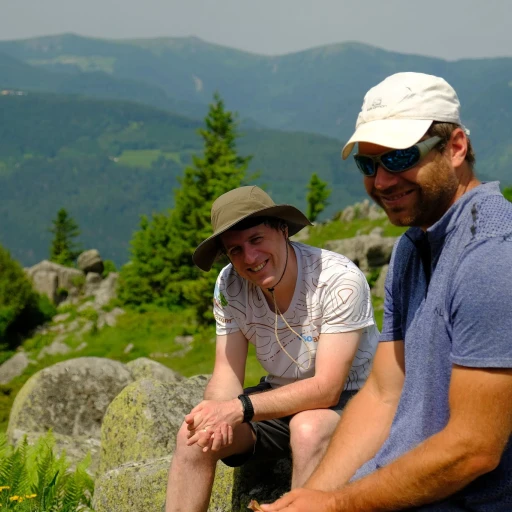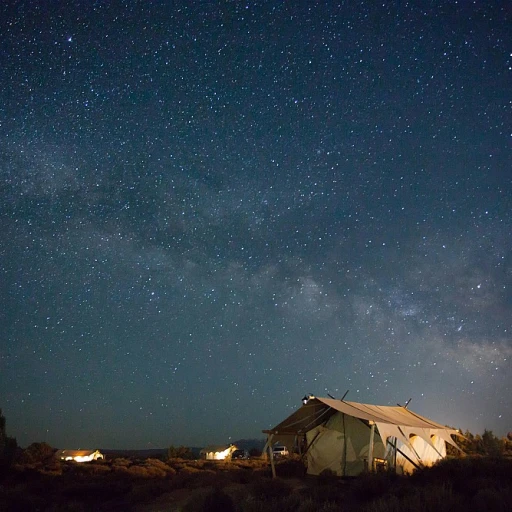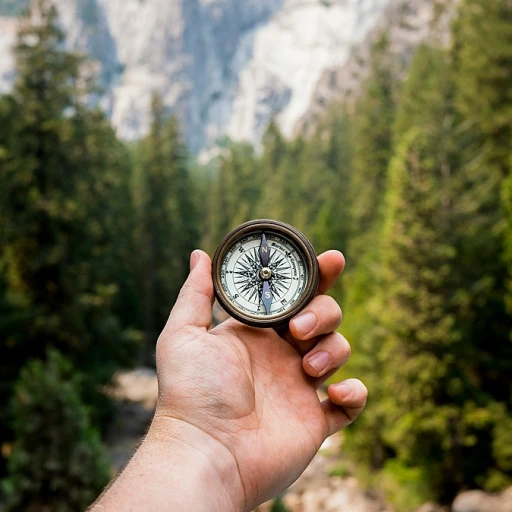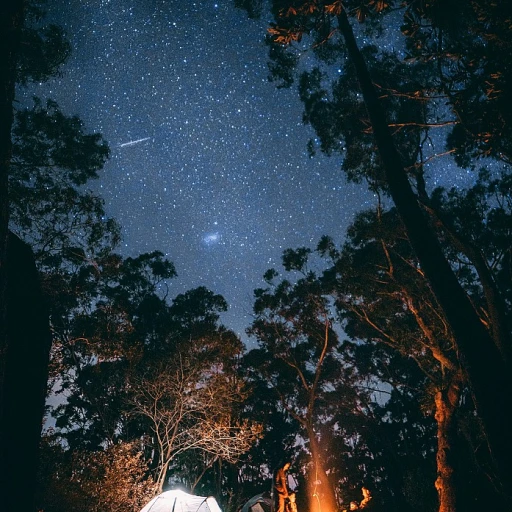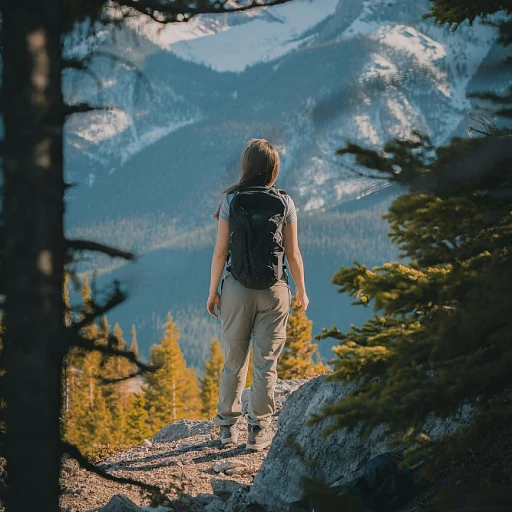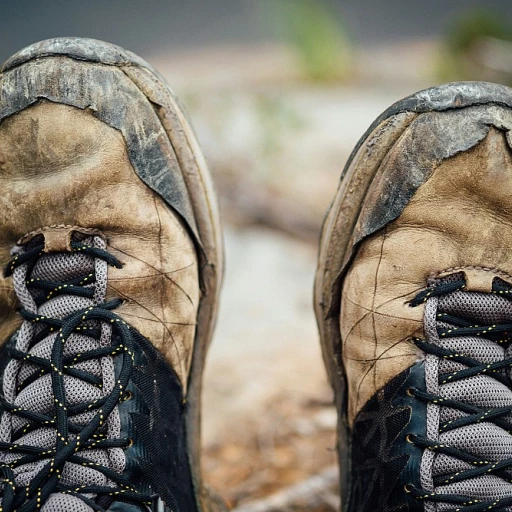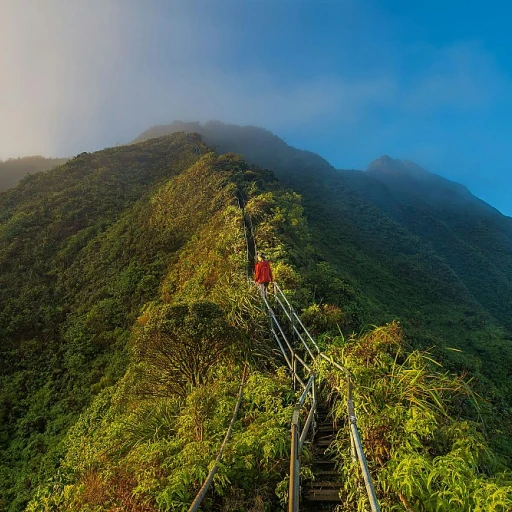The geological marvels of hoodoos
What exactly are hoodoos?
The first time you lay eyes on hoodoos, you might think you’ve stepped into another world. These otherworldly rock formations, characterized by their tall, thin spires, seem to rise out of the earth like nature's skyscrapers. Found in deserts and badlands, hoodoos are formed through a combination of weathering and erosion.
Hoodoos are most commonly found in regions with significant temperature fluctuations. The process of their formation begins with the weathering of sedimentary rock due to natural elements like wind, water, and ice. Over millions of years, softer rock erodes away, leaving columns of harder rock capped with larger, more resistant stones.
Formation through frost wedging
One of the primary mechanisms in the formation of hoodoos is frost wedging. This process, crucial to shaping these unique structures, involves the expansion and contraction of water within rock crevices. As water seeps into small cracks in rock and freezes, it expands, causing the rock to fracture and split. Over time, continuous freezing and thawing cycles break down the softer rock, sculpting the peculiar shapes we admire today.
Iconic hoodoo locations globally
Though famous for their presence in Bryce Canyon National Park, hoodoos can be found all over the globe. From Drumheller in Alberta to Cappadocia in Turkey, these geologic formations intrigue nature lovers worldwide. Their unique appearance and variety of shapes make them a must-see in natural history explorations.
The cultural significance and lasting impact
Hoodoos don’t just offer an incredible visual experience; they bear cultural and historic significance. Indigenous peoples and local communities often regard these formations with reverence, considering them sacred or inhabited by spirits. For example, the native Paiute people have a rich history intertwined with the hoodoos of Utah’s Bryce Canyon.
The impact of climate change and erosion
Erosion shapes hoodoos, yet climate change now accelerates this process. As temperatures rise and weather patterns alter, the rate at which hoodoos deteriorate is expected to increase. Understanding and preserving these natural wonders become even more critical, demonstrating the profound effects of our shifting climate on geological formations.
For a comprehensive guide on planning your adventure in every season, visit our Zion National Park weather guide.
Iconic hoodoo destinations around the world
Top destinations around the globe for stunning hoodoo formations
Hoodoos, those intriguing pillars of rock, can be found scattered across some of the planet's most awe-inspiring landscapes. From North America to Europe and Asia, let's take a closer look at some iconic hoodoo destinations that should be on every adventurer's list.
Usa: the heartland of hoodoos
The USA boasts some of the most famous hoodoo formations, notably within Bryce Canyon National Park, Utah. Renowned worldwide for its surreal landscape, Bryce Canyon is home to thousands of hoodoos. According to the National Park Service, Bryce Canyon hosts over 2.7 million visitors annually, an easy testament to its appeal.
Also noteworthy is the Kasha-Katuwe Tent Rocks National Monument in New Mexico. This location is celebrated for its conical hoodoos and slot canyons. Another gem is Goblin Valley State Park, Utah, which features thousands of mushroom-shaped rock formations and resembles an alien landscape.
Hoodoos beyond the usa
Beyond the American borders, Alberta, Canada, hosts the striking hoodoos of Drumheller. China's Yuanmou Earth Forest, often compared to Bryce Canyon, also offers an impressive display of hoodoo formations. Other notable mentions include Turkey's Cappadocia, famous for its fairy chimneys, and Serbia's Devil's Town.
Exploring bryce canyon's hoodoos
Visiting Bryce Canyon provides an excellent opportunity to witness the grandeur of hoodoos up close. The Navajo Loop and Queen's Garden Trails offer some of the best views. From the smooth, rounded ridges to the jagged spires, these trails allow hikers to immerse themselves in the park's unique geology.
International intrigue
Hoodoos aren't just North American phenomena. The region of Cappadocia in Turkey features fairy chimneys that have been a significant tourist draw for years. Italy also has its version of hoodoos in the form of Piramidi di Zone located in Northern Italy. These formations have been attracting geologists and travelers alike due to their distinct shapes and historical significance.
The list of hoodoo destinations is vast and varied. Each location, from the Chiricahua National Monument in Arizona to the Toadstool Hoodoos, presents a unique aspect of these natural sculptures, offering endless exploration opportunities for enthusiasts and casual hikers alike.
Hiking trails with the best hoodoo views
Explore hoodoos at bryce canyon national park
When it comes to hiking trails that offer spectacular views of hoodoos, bryce canyon national park in Utah is a must-visit. This park is home to some of the most iconic hoodoos in the world. The Queen's Garden Trail and the Navajo Loop are popular hiking trails that provide stunning views of these unique rock formations. The Queen's Garden Trail offers a 1.8-mile round trip that features beautiful viewpoints and easy access to hoodoos. Meanwhile, the Navajo Loop Trail, with its 1.3-mile round trip, takes you through the Bryce amphitheater, where you'll find hundreds of hoodoos clustered together. The best time to hike these trails is in the early morning or late afternoon when the lighting is optimal for photography.
Discover the wonder of toadstool hoodoos in kanab
Another fantastic location to see hoodoos is near Kanab, Utah. The Toadstool Hoodoos, located within the Grand Staircase-Escalante National Monument, is a hidden gem that offers a relatively easy 1.5-mile round trip hike. The trail leads you through a desert landscape filled with these unique rock formations, which resemble mushrooms or toadstools. This area is lesser-known compared to Bryce Canyon, so it provides a more secluded experience.
Experience the uniqueness of goblin valley state park
For a different kind of hoodoo experience, visit Goblin Valley State Park in Utah. The park is famous for its strange and whimsical rock formations that resemble goblins. The Valley of Goblins is the main attraction here, and it offers endless opportunities for exploration and photography. There are several trails within the park, but many visitors enjoy simply wandering among the rocks. The best time to visit is during the spring or fall when the weather is mild.
Venture into the kasha katuwe tent rocks national monument
If you find yourself in New Mexico, don't miss the opportunity to hike the trails at Kasha-Katuwe Tent Rocks National Monument. This area features unique hoodoos that have a distinct tent-like appearance. The Canyon Trail is a popular hike here, offering a 3-mile round trip that includes a slot canyon and a steep climb to the top of a mesa, where you'll be rewarded with panoramic views of the surrounding landscape.
Explore the world of hoodoos beyond the u.s.
While the U.S. is home to many iconic hoodoo destinations, don't overlook the incredible hoodoo formations found around the world. In Turkey, the region of Cappadocia is renowned for its fairy chimneys and unique rock landscapes. Italy's Alberobello and France's Provence regions also boast stunning hoodoo formations. In North America, Drumheller in Alberta, Canada, is famous for its hoodoos formed by erosion over 70 million years ago.
If you're planning your next outdoor adventure and want more ideas on where to go, check out things to do in Sedona, Arizona for a mix of beautiful red rocks and unique trails. Where will your next hike take you?
Understanding the process of frost wedging
The role of frost wedging in hoodoo formation
Frost wedging, a powerful natural process, plays a crucial role in shaping hoodoos. This occurs when water seeps into rock cracks, freezes, and expands. Over time, this repeated freeze-thaw cycle pries the rock apart. In regions like Bryce Canyon National Park, this process is critical in forming the stunning hoodoos we know today.
A deep dive into the freeze-thaw cycle
The freeze-thaw cycle is a fundamental part of frost wedging. Water infiltrates small fissures in rocks and then freezes. As it freezes, it expands by approximately 9%, creating immense pressure. According to the National Park Service, this pressure can exert up to 30,000 pounds per square inch, sufficient to gradually split rocks apart.
Scientific studies on frost wedging
Several studies validate the significance of frost wedging. A report by the Geological Society of America highlighted how frost action is essential in the evolution of rock formations. Detailed field studies in various regions, including the Colorado Plateau, reinforce this narrative, showcasing how environmental factors interact to create distinct landscapes.
Frost wedging beyond Bryce Canyon
This process isn't exclusive to Bryce Canyon. In places like Goblin Valley State Park and Chiricahua National Monument, frost wedging contributes to unique geologic formations. Even internationally, areas like Cappadocia in Turkey and the Kasha-Katuwe Tent Rocks in New Mexico exhibit similar patterns shaped by this natural phenomenon.
Observations from experts
Experts like Dr. Bill Dunne from the University of Tennessee emphasize the importance of frost wedging in landscape evolution. Dr. Dunne explains, "Frost wedging is a quiet yet powerful force, slowly but surely dismantling rock formations over millennia." His insights underscore the gradual yet relentless nature of this process.
Capturing the effects of frost wedging
Photographers capturing hoodoos often focus on the intricate details left by frost wedging. These features provide a glimpse into the slow, powerful dance between water and rock. The fascinating textures and patterns serve as a testament to nature’s creative forces at work, inspiring awe and appreciation among viewers.
Remarkable examples of frost-wedged formations
Some iconic formations, such as the Navajo Loop and the Queen's Garden Trail in Bryce Canyon, highlight the results of frost wedging. These trails offer hikers a chance to witness firsthand how this natural ice sculpting process shapes the landscape. The National Park Service maintains these trails, ensuring safe and accessible routes for nature enthusiasts.
The history and cultural significance of hoodoos
A walk through time and culture
Hoodoos aren't just geological formations; they are storied witnesses to time, culture, and the forces of nature. Over millions of years, these mysterious rock pillars have fascinated humans, inspiring legends and giving rise to cultural tales intertwined with local heritage.
Native american legends
In the United States, various Native American tribes have their own mythologies about hoodoos. The Paiute people of southern Utah, particularly, believed these rock formations were once people who were turned into stone for their misdeeds. This folklore adds an eerie yet enchanting atmosphere when one walks through Bryce Canyon National Park or other areas rich with hoodoos like Goblin Valley State Park.
Symbolic significance in different cultures
In Europe, hoodoos have inspired tales of giants and ancient deities. In Serbia's Đavolja Varoš (Devil's Town), hoodoos are considered petrified remains from a mystical wedding party interrupted by dark forces. Similarly, in Cappadocia, Turkey, hoodoos known as 'fairy chimneys' have been associated with ancient spirits and celestial magic.
The economic and educational value
Hoodoos also hold contemporary significance, driving tourism and educational research. Bryce Canyon, Utah, alone attracts over 2.5 million visitors annually, contributing significantly to local economies and offering a classroom without walls for geologists and ecologists. Tour guides, park service members, and educators utilize these geologic formations to teach Earth’s dynamic history.
Why hoodoos matter in the age of climate change
These rock formations are also barometers of climate. As the climate changes, so too does erosion, impacting the appearance and stability of hoodoos. This makes hoodoos a visible and tangible marker of environmental shifts, underscoring their importance in both natural history and ongoing climate studies.
Hoodoos in the context of erosion and climate change
Erosion's role in shaping hoodoos
With their surreal, otherworldly shapes, hoodoos are a captivating testament to the powerful forces of erosion. These rock formations are primarily shaped by the twin processes of water erosion and frost wedging. Water, especially in the form of rain, carves out softer rock, leaving behind spires of harder material. This ongoing process over millions of years has led to the spectacular hoodoos we marvel at today.
Interestingly, hoodoos are more than just visually stunning landmarks. They are also indicators of environmental changes. Researchers have found that as climate patterns shift, the rate of erosion changes too. For instance, a study published in the journal Geology noted that increased rainfall due to climate change could accelerate the erosion process, thereby altering the landscape of hoodoo-rich areas like Bryce Canyon National Park. This means that while hoodoos are naturally created over thousands of years, they could also face accelerated destruction if current climate trends continue.
Climate change and its impact on hoodoo preservation
The current understanding of climate change suggests significant impacts on these geological wonders. According to the National Park Service, rising temperatures and altered precipitation patterns are likely to affect rock formations such as hoodoos. Bryce Canyon, known for its prominent hoodoos, has already begun to see subtle changes in its rock structures due to these environmental shifts.
In an interview with Dr. Marjorie Chan, a renowned geologist at the University of Utah, it was mentioned that, “As the climate warms, frost wedging occurs less frequently. This reduces the formation of new hoodoos and alters the erosion patterns of existing ones.” The decreased frost wedging means fewer new hoodoos form over time, fundamentally altering the landscape of these awe-inspiring natural structures.
Case study: Bryce canyon national park
Take Bryce Canyon, for instance. Nestled in the heart of Utah, this national park is a hotbed of hoodoo activity. It’s fascinating to note that these distinctive rock formations are not just shaped by the natural environment but are also somewhat controlled by the climate. A report by the U.S. Geological Survey finds that changing climate conditions can significantly impact the park's famous hoodoos. The erosion rates in Bryce Canyon help educators and park managers anticipate future changes and devise ways to protect these geological treasures.
Such proactive measures are essential to preserve the beauty and ecological significance of Bryce Canyon’s hoodoos. Implementing educational programs and guided tours to highlight the importance of climate change and erosion can go a long way in cultivating public awareness and fostering sustainable tourism practices.
Planning your trip to see hoodoos
Top tips for traveling to hoodoo destinations
When planning your trip to see hoodoos, timing can be everything. Bryce Canyon National Park in Utah is infamous for its stunning hoodoos and has the perfect blend of accessibility and natural wonder. The best time to visit is during the spring (April to May) and fall (September to October) when the temperatures are moderate, ranging from 40°F to 70°F. Summer months can get quite hot, with June to August temperatures often soaring above 80°F, but it's also the most crowded season.Preparing for the weather and terrain
Bryce Canyon National Park's hoodoos are at higher elevations; be prepared for cooler conditions. Even in summer, it's not uncommon for nighttime temperatures to drop significantly. If you're traveling in the winter, make sure you're prepared for snow and ice, which can make trails more challenging. Layered clothing, good hiking boots, and a sturdy pair of trekking poles are essential.Accommodations and lodging
Staying in or near Bryce Canyon offers a range of options. The park itself has two campgrounds, North Campground and Sunset Campground, which are open seasonally. Lodging options in the park include Bryce Canyon Lodge, known for its rustic charm and proximity to the hoodoos.Outside the park, towns like Tropic, Panguitch, and Cannonville offer additional accommodations. There are also several RV parks and campgrounds for those traveling with recreational vehicles.
Must-see trails and viewpoints
For the absolute best hoodoo views, the Navajo Loop and Queen's Garden Trail are top choices. The Navajo Loop is a 1.3-mile round trip that takes you right through Wall Street, a narrow slot canyon filled with towering hoodoos. The Queen's Garden Trail is slightly longer at 1.8 miles round trip and offers iconic views of the Queen Victoria formation.Combining these two trails creates a stunning three-mile loop that's perfect for a half-day hike. For those seeking a longer adventure, the Peekaboo Loop Trail, at 5.5 miles, takes you deeper into the hoodoo-packed Bryce Amphitheater.
Practical tips for visiting other hoodoo hotspots
While Bryce Canyon gets a lot of attention, don't forget about other incredible hoodoo locations. Goblin Valley State Park, also in Utah, offers a different but equally mesmerizing hoodoo experience. The toadstool hoodoos near Kanab provide a less crowded but breathtaking visit.Whether you're exploring Kasha-Katuwe Tent Rocks in New Mexico or Cappadocia in Turkey, research the best times to visit, suitable trails, and local accommodations. Always check if permits or fees are required.
Utilizing park services and resources
The National Park Service offers invaluable resources for planning your visit. Their website provides up-to-date information on trail conditions, weather forecasts, and any advisories or closures.Rangers can also offer invaluable tips and insights. Don't hesitate to attend ranger-led programs and talks—they can enrich your visit with expert knowledge on natural history and geology.
So, get your gear ready, plan your trip with these tips, and immerse yourself in the enchanting world of hoodoos. Your adventure awaits!
Expert insights and photography tips for capturing hoodoos
Photography tips from professionals
To capture the majestic hoodoos in all their glory, it’s essential to gear up with the right equipment and knowledge. Renowned photographer Tom Till advises using a wide-angle lens to encapsulate the vastness of landscapes like Bryce Canyon. For precise details, a telephoto lens can zero in on the intricate rock formations.
Lighting is key when shooting hoodoos. Early mornings and late afternoons, often termed the 'golden hours,' provide the most dramatic illumination, casting long shadows that accentuate the rugged features of the hoodoos. Another expert, Patricia Davidson, stresses the importance of overcast days as well. The soft light on a cloudy day minimizes harsh shadows, enhancing the subtle tones of the rock formations.
Mastering the art of composition
Composition is crucial when capturing hoodoos. Experts suggest the rule of thirds: position the hoodoos off-center to create an engaging photograph. Leading lines, such as trails or natural features, can draw the viewer’s eye through the photo, making them feel part of the scene.
If visiting famous spots like Bryce Canyon or Goblin Valley State Park, envision different perspectives. Ariel photographer Julie Waterhouse highlights how aerial shots can reveal the extensive networks and patterns of hoodoos that are otherwise unnoticed from the ground. Drones have made it easier to get these breathtaking views, but check the local regulations before flying one.
Gear and preparation for the perfect shot
Proper equipment can make a significant difference. In addition to cameras and lenses, Bob Gibbons, author of 'Hiking and Trekking in the High Atlas,' recommends carrying a sturdy tripod for stability, especially during long exposure shots at dusk or dawn. A polarizing filter can also enhance the vibrant colors of the rocks, particularly under direct sunlight.
Remember to carry spare batteries and memory cards. The remote locations of many hoodoo sites, including Kasha-Katuwe Tent Rocks National Monument and Toadstool Hoodoos, mean it might be challenging to find replacements.
Personal insights and stories
Amateur photographer Jane Edwards shares, “My first trip to Bryce Canyon National Park was an eye-opener. I walked the Navajo Loop Trail, snapping pictures every few steps. The Queen Garden Trail, with its towering hoodoos, became a favorite. I realized the magic happens when you stay patient and let the light play its part.”
Understanding the environment and weather is crucial too. Harsh midday sun might wash out the colors, but rainy weather can bring out deeper hues and textures in the rock formations. It’s not just about sunny days; challenge yourself to shoot in different conditions.
Case studies: success and learnings
A case study by the National Park Service on photograph trends in parks like Bryce Canyon highlights that 78% of visitor photos are taken during the golden hours. This study emphasizes how light conditions directly impact the quality of hoodoo images.
Another study from the University of Utah explores how erosion patterns visible in photos provide valuable data to geologists. This link between photography and geological research showcases the broader implications of capturing these natural wonders.
Smartphone photography tips
For those using smartphones, some principles still apply. Adjust your phone settings to capture higher resolution images. HDR mode can help balance exposure in high-contrast scenes characteristic of canyons. Apps like Snapseed or Lightroom can enhance your shots post-capture.
Don’t shy away from experimenting with different angles. Sometimes, the best shots come from getting low to the ground or finding a high vantage point. Consistently practicing and learning from each photo session will hone your skills over time.
Combining passion with patience
Capturing hoodoos is both an art and a science. It requires preparedness, the right tools, and a fair amount of patience. As you snap those epic formations, you’re not just taking pictures but also preserving a piece of natural history. Enjoy the process and let each photo tell a story of its own.
Photographing hoodoos combines the thrill of adventure with the serenity of nature, offering a rewarding experience for every enthusiast. Happy shooting!
